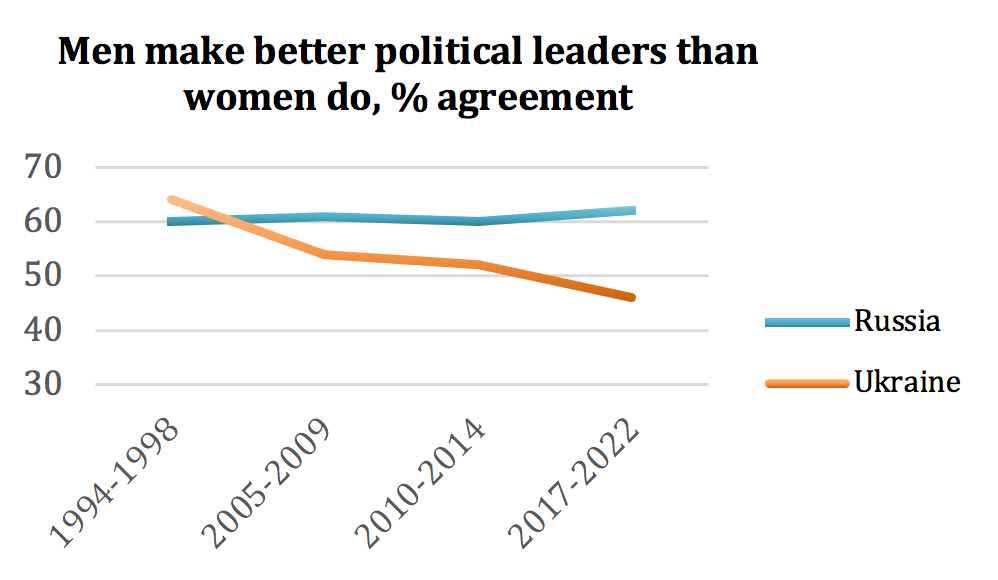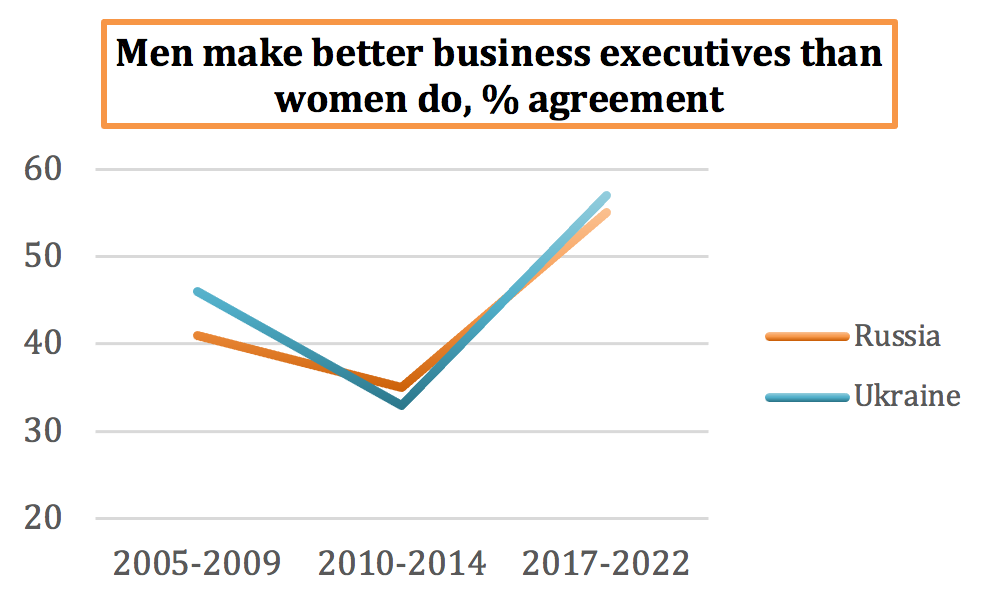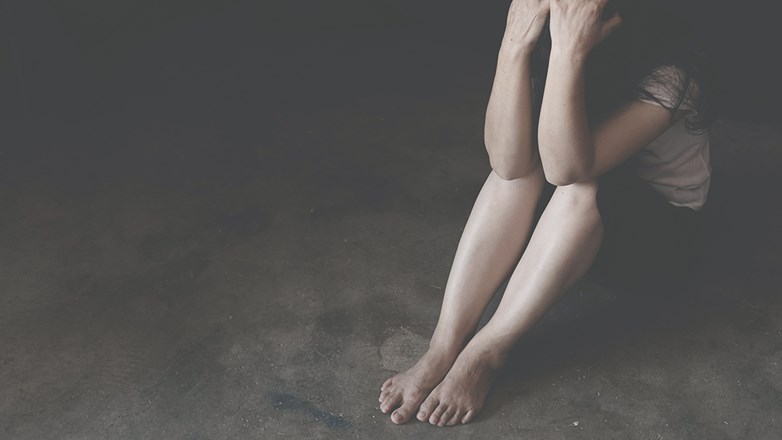Gender-based violence in conflict
In this policy brief, SITE researchers Maria Perrotta Berlin and Pamela Campa discuss the implications of conflict for gender-based violence, with a special focus on the ongoing war in Ukraine. They also outline some policy interventions that might help mitigate the risks that women face, holding those responsible to account, and building a more gender-equal society from the reconstruction efforts. Their discussion draws from existing academic literature and inputs from the special panel session on conflict during the FROGEE conference “Economic and Social Context of Domestic Violence”.
Gender-based violence during conflicts
During war, as in peacetime, women are exposed to different forms of violence, and to a different extent, as compared to men. In other words, there are gender-specific aspects of conflict-related violence, both in immediate conflict areas and in the places where affected populations might seek refuge.
One form of violence against women in conflict areas is sexual violence and rapes perpetrated by combatants. Scholars and policy analysts tend to portray this violence as a weapon of war (Eriksson and Stern, 2013), meaning that it is a way of humiliating and demoralizing the enemy as individuals and as communities. Differently put, the narrative that portrays sexual violence as, for instance, the consequence of unmet sexual needs among soldiers is increasingly less accepted. Sexual violence against women perpetrated by armed forces in conflict areas is tragically prevalent. While proper quantification of the phenomenon is hard for obvious reasons, it is estimated for example that at least 500,000 women were raped during the Rwandan genocide, and 50,000 during the war in Bosnia (Guarnieri and Tur-Prats, 2022).
Another form of gender-based violence in conflict is that women who are uprooted by war tend to confront a high risk of sexual violence during their journey away from home and in the places where they seek refuge. Vu et al. (2014) estimate, through meta-analysis, that approximately one in five refugees or displaced women in complex humanitarian settings experienced sexual violence. The study also highlights the need for more data to shed light on the characteristics of perpetrators. The presence of aid workers among them appears to persist through several humanitarian crises (Reis, 2021).
Further, women and children fleeing war areas are vulnerable to the risk of trafficking and exploitation for sexual or other work (as highlighted in the FROGEE conference panel). Traffickers and criminal organizations tend to exploit the combination of a mass movement of people in precarious economic situations and the decreased scrutiny generated by the humanitarian emergency.
Finally, war heightens the risk of intimate partner violence (IPV) in conflict areas as well as among refugees and displaced individuals, by causing stress, trauma, economic hardship and increased substance abuse, all of which lead to deterioration in mental health and the quality of relationships (Conference panel). An actual or perceived sense of impunity can also undermine victims’ propensity to report IPV at such a time. A systematic review of the published literature on gender-based violence in conflict finds that estimated rates of IPV across most studies are much higher than the rates of rape and sexual violence perpetrated outside the home (Stark and Ager, 2011).
The consequences of conflict on IPV can be long-lasting. Evidence from post-genocide Rwanda shows that women who married after the conflict were more likely to be victims of spousal abuse; skewed sex ratios that reduced women’s bargaining power in the marriage market appear to be the relevant channel (La Mattina 2017). Another important factor is posttraumatic stress disorder (PTSD) among veterans: a study of US military personnel shows that assignment to combat in the Global War on Terrorism is associated with higher incidence of domestic violence and lower relationship quality (Cesur and Sabia, 2016). The increased availability of small weapons can also lead to more frequent or more violent instances of domestic abuse (Conference panel).
The war in Ukraine
Reports from the US State Department and Amnesty international document episodes of sexual violence from armed conflict actors in Donetsk and Luhansk since the start of the conflict in 2014 (Amnesty International, 2020). Both Russian and Ukrainian military were involved, speaking to the tragedy that the population close to the “contact area” have witnessed since 2014.
At present, growing evidence is emerging that Ukrainians, especially but not exclusively women and girls, are victims of rape, gang-rape and forced nudity perpetrated by Russian military troops invading the country (United Nations). It is notoriously difficult to collect and verify data and facts on sexual violence during wartime, but these early accounts, and the experience from previous conflicts, call for a high level of scrutiny and readiness to help. Research also suggests some potential factors that aggravate the prevalence of sexual violence in conflict. Guarnieri and Tur-Prats (2020) show that armed actors who hold more gender-unequal norms are more likely to be perpetrators of sexual violence, and that the incidence of sexual violence is highest when the parts in conflict hold gender norms that differ substantially (Guarnieri and Tur-Prats, 2022). Survey data show that the share of people who appear to hold gender-unequal norms in Russia remained high over the years, based on questions on the effectiveness of women and men as political or business leaders (Figures 1 and 2), or the desirability of women earning more than their husbands (not shown).
Figure 1. Men make better political leaders than women do, % agreement.

Source: World Value Survey
Figure 2. Men make better business executives than women do, % agreement.

Source: World Value Survey
Evidence on the evolution of norms in Ukraine is more mixed (see Figures 1 and 2). All in all, surveys of gender-role attitudes suggest that gender stereotypes persist in Russian society, but it is not obvious that the prevailing gender norms are starkly different between Russia and Ukraine. On the other hand, attitudes toward IPV in the two countries might be evolving differently, at least among the respective elites, based on the fact that legislation on domestic violence recently changed in opposite direction in the two countries. Specifically, Russia decriminalized minor forms of domestic violence in early 2017. Conversely, Ukraine strengthened the legal response to domestic violence in early 2019, in particular making minor but systematic domestic violence criminally punishable, and extending criminal punishment beyond physical violence to include emotional and economic violence.
As a consequence of the war, almost 13 million Ukrainians have left their homes since Russia invaded on Feb. 24, 2022, according to the United Nations. Almost all of them are women and children, since men and boys aged 18 to 60 are required to stay in Ukraine to defend the country. Women traveling alone with their children, especially when fleeing to foreign countries where they often have no connections, are clearly at risk of assault and exploitation. Such risk is heightened by the exceptional speed of the refugee influx, whereby an impromptu response from the host countries is by necessity reliant on individual independent participation. Private hosts have spontaneously been opening their homes to accommodate for days or even weeks Ukrainians fleeing the war. Proper vetting of these offers is made difficult by the sheer number of people who are being welcomed in bordering countries, for instance Poland, as well as by the exceptional response from private individuals. Within a little more than a month from the start of this crisis there had already been a few episodes of sexual violence against Ukrainian refugees in their host countries (specifically in Poland and Germany).
While the current death toll in the war in Ukraine is unlikely to lead to dramatically skewed sex-ratios, this aspect might become more relevant as events evolve, in light also of the fact that nearly the universe of those who fled the country so far consists of women and children.
Finally, in the post-conflict period, the presence of small weapons, which have been made available to civilians to defend the country, is an additional risk factor for IPV (Conference panel).
What can be done?
Academics, international organizations, activists and female politicians from Ukraine have made specific requests to improve the system of protection and accountability in the face of sexual violence against women living in or fleeing from conflict zones. These suggestions include ensuring that the system of transitional justice that will govern the post-conflict period establishes proper investigation and punishment of every form of sexual violence performed by armed actors during the war. To this end, some steps have already been taken. The UN Resolution in favor of the creation of an International Commission of Inquiry refers explicitly to the need to recognize the gender dimension of violations and abuses.
Beyond the horizon of the war, the safety of Ukrainian women in their homes relies on the protection offered by State legislation against domestic violence. In this respect, the Ukrainian government has recently taken a few measures in what the international community deems to be the “right direction”. A very important reform taken in the summer of 2021 allows for the military to be prosecuted for domestic violence on a general basis rather than on the basis of the disciplinary statute as it was before. This is especially important in light of the findings of increased risk of domestic violence in families of veterans (Cesur and Sabia, 2016). However, some critical aspects remain. In the current context, a crucial factor might be the limit of 6 months to prosecute the crime from the occurrence of the violence. An extension of such a period at a time when the normal functioning of many institutions is suspended or subject to delays can attenuate the perception of impunity that the exceptionality of the circumstances creates.
When it comes to refugees, there is as mentioned a need for better vetting of private hosts, although the urgency of action that the current circumstances require makes this a particularly challenging task. State effort in this direction has been complemented by civil society initiatives. For example, in Sweden, Facebook groups that lined up to coordinate the offer of housing are now organizing themselves to create a system for verifying housing and hosts.
Ukrainian politicians have also asked Western countries to be prepared to offer expertise on how to support survivors of rape and other sexual violence in conflict.
Other experts recommend reliance on cultural and linguistic mediators to help refugee women access services for victims of IPV that are already offered by local actors in their temporary host country (Conference panel).
In the longer term, guaranteeing economic safety for refugees is also an effective measure to reduce their vulnerability to exploitation from sex-traffickers and criminal organizations.
Finally, yet importantly, the involvement of women in peace negotiation processes should be sought after. Echoing the discussion on women’s scarcity in leadership positions in peacetime, the gender-unequal composition of peace delegations poses an issue of equality, representativeness, and efficiency (Bertrand 2018). Interestingly, it has been noted that a more truthful narrative of war, which recognizes women’s role not only as victims but also as perpetrators (and the converse for men, although proportions are clearly unbalanced in both cases), might help pave the way for higher female representation at negotiation tables (Conference panel). Relatedly, the European Institute for Gender Equality proposes gender mainstreaming of all policies and programs involved in conflict resolution processes (EIGE). The international community should also consider gender mainstreaming of reconstruction programs, to help build a more gender-equal post-conflict Ukraine.
References
Disclaimer: Opinions expressed in events, policy briefs, working papers and other publications are those of the authors and/or speakers; they do not necessarily reflect those of SITE, the FREE Network and its research institutes.
Photo by HTWE, Shutterstock.com.




